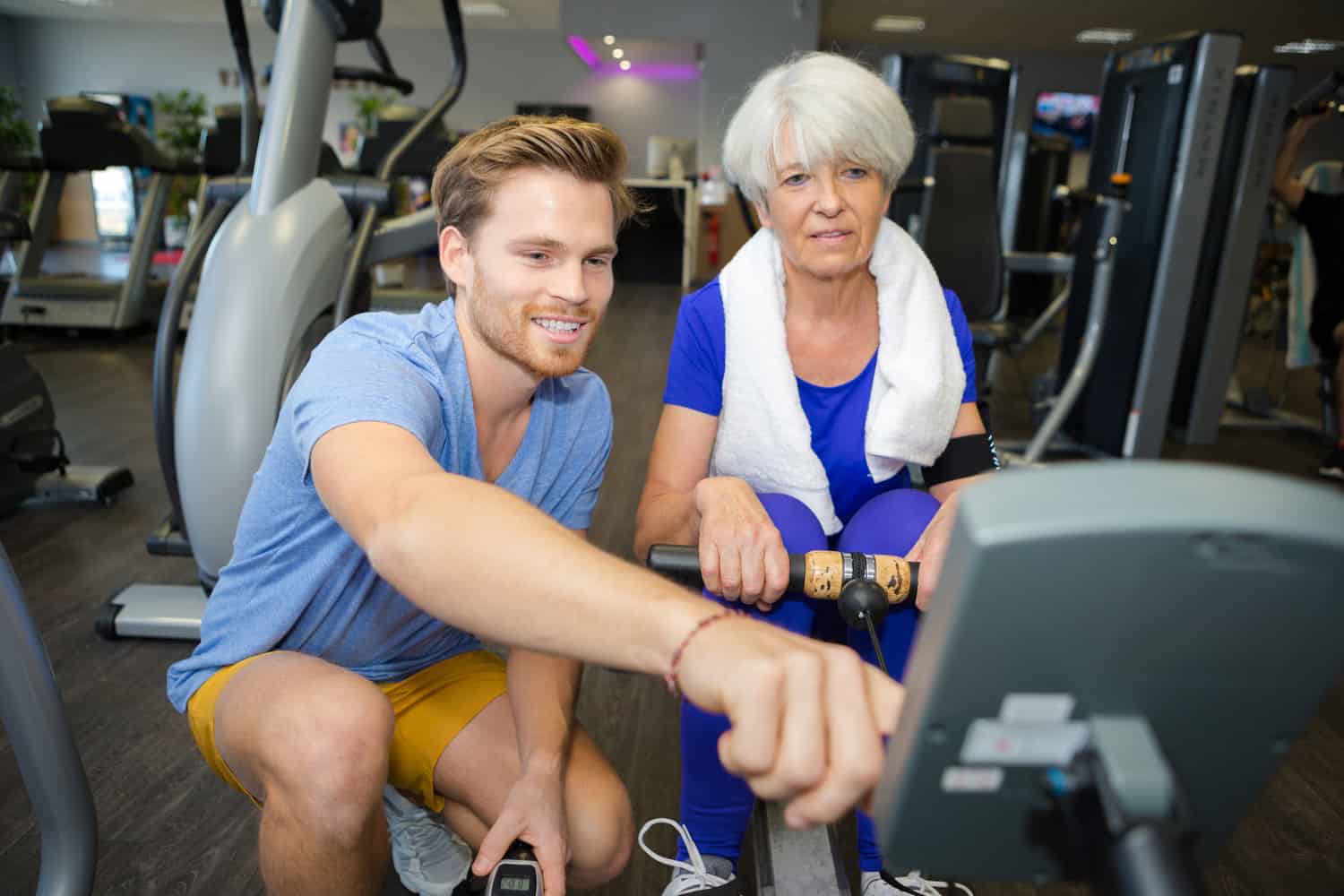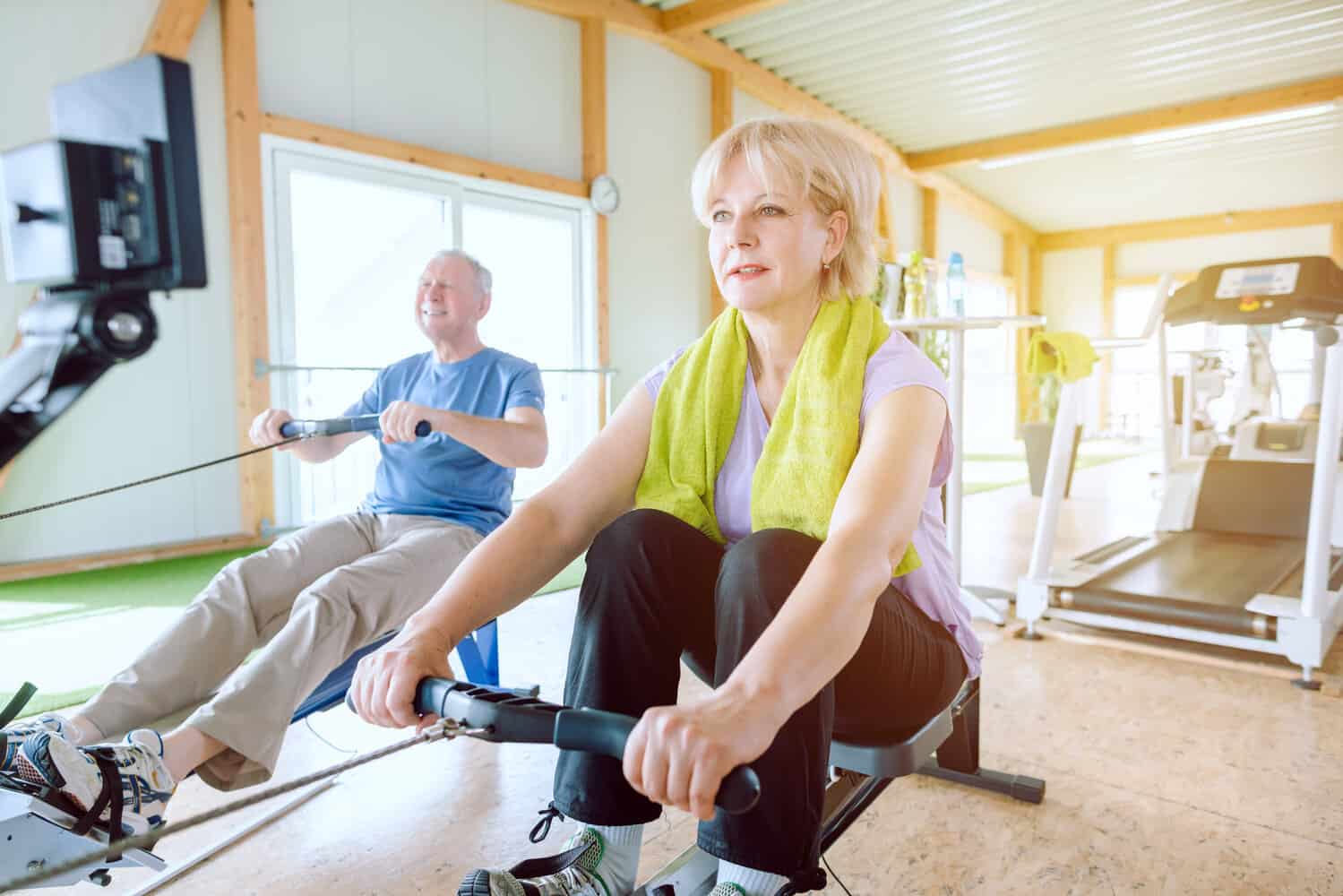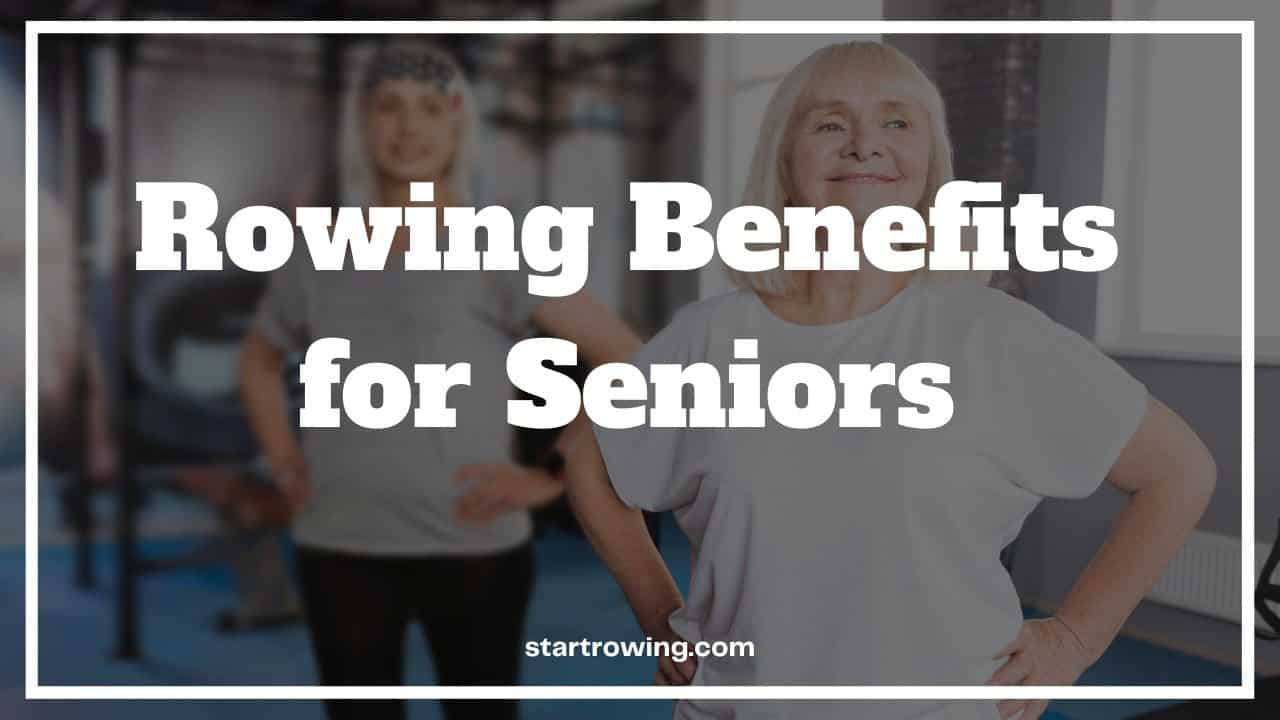Are you a senior looking for a low-impact, full-body workout that can transform your life? Then look no further! As a seasoned rowing expert with years of experience, I’m here to guide you through the incredible rowing benefits for seniors.
In this article, we’ll explore the top health benefits of rowing, tips for starting a routine, safety precautions, and inspiring stories of seniors who have embraced this amazing exercise. So, let’s dive into the world of rowing – your body and mind will thank you!
Table of Contents
Top Health Rowing Benefits for Seniors
Rowing is an excellent exercise for seniors, offering numerous health benefits that can contribute to a better quality of life.
- Improved cardiovascular health: Rowing is an aerobic exercise that engages major muscle groups, leading to increased heart rate and improved circulation. This can result in better cardiovascular health, which is essential for seniors to reduce the risk of heart disease and stroke.
- Enhanced muscle strength and endurance: During a rowing session, you work on both your upper and lower body muscles, including your legs, arms, back, and core. This full-body workout helps to improve muscle strength and endurance, which is particularly important for seniors as they are more prone to muscle loss due to aging.
- Increased flexibility and joint health: Rowing requires a wide range of motion, which can help to increase flexibility and maintain joint health. As we age, joint stiffness and reduced mobility can become significant issues. Rowing can help seniors maintain their range of motion and alleviate some of the discomfort associated with joint problems.
- Boosted cognitive function: Regular physical activity, like rowing, has been shown to have positive effects on cognitive function. For seniors, this can translate to better memory, sharper focus, and a reduced risk of age-related cognitive decline.
- Better balance and coordination: Rowing engages your core muscles, which are crucial for maintaining balance and coordination. Improved balance is particularly important for seniors, as it can help prevent falls and related injuries.
- Weight management and diabetes prevention: Rowing is an effective calorie-burning exercise, which can help seniors maintain a healthy weight and reduce the risk of obesity-related health issues, such as type 2 diabetes.
- Reduced stress and improved mental well-being: Regular physical activity has been linked to reduced stress and improved mental well-being. Rowing can be a meditative exercise, providing seniors with a healthy outlet for managing stress and promoting a positive mood.
Rowing offers a myriad of health benefits for seniors, making it an excellent choice for maintaining physical and mental well-being. Embracing this low-impact exercise can lead to a healthier, more active lifestyle for seniors, improving their overall quality of life.
Tips for Starting a Rowing Routine for Seniors

Starting a rowing routine may seem daunting for seniors who are new to the exercise. Here are some essential tips to help seniors embark on their rowing journey with confidence.
- Consult a healthcare professional: Before beginning any new exercise routine, it’s crucial for seniors to consult with their healthcare provider. They can assess your current health, provide personalized recommendations, and help you identify any potential risks or limitations.
- Choose the right rowing machine: Invest in a rowing machine that is comfortable, easy to use, and meets your specific needs. Look for features such as adjustable resistance, a comfortable seat, and easy-to-read displays. You can read our guide on the best rowing machines to find a suitable model for your home.
- Start with a low-intensity workout and progress gradually: Begin with a low-intensity workout and gradually increase the duration and intensity of your sessions. This approach allows your body to adapt to the new exercise and reduces the risk of injury or overexertion.
- Focus on proper rowing technique: Learning the correct rowing technique is essential for preventing injury and ensuring you get the most out of your workout. Break down the rowing stroke into four phases – catch, drive, finish, and recovery – and practice each phase individually before putting them together.
- Warm-up and cool-down exercises: Incorporate a 5-10 minute warm-up and cool-down session before and after your rowing workout. This can help prevent injuries and improve your overall performance. Stretching exercises targeting the major muscle groups are particularly beneficial during the cool-down phase.
- Incorporate rowing into a balanced exercise routine: For optimal health benefits, combine rowing with other forms of exercise, such as strength training, flexibility exercises, and balance training. This well-rounded approach will ensure you work on different aspects of fitness and prevent boredom.
Following these tips can help seniors start a rowing routine that is safe, effective, and enjoyable. Remember to listen to your body and adjust your workouts as needed.
Rowing Modifications and Safety Precautions for Seniors
Ensuring safety and making necessary modifications are vital for seniors when engaging in rowing exercises. Here are some key rowing modifications and safety precautions to consider:

Adjust resistance levels to suit individual needs
Most rowing machines have adjustable resistance settings, allowing you to choose a level that suits your abilities. Start with lower resistance and gradually increase it as your fitness level improves. Be mindful not to overexert yourself.
Use caution with pre-existing conditions
Seniors with pre-existing conditions such as arthritis, osteoporosis, or heart problems should take extra care when starting a rowing routine. Consult your healthcare provider for specific recommendations and consider working with a fitness professional to create a tailored exercise plan.
Recognize signs of overexertion and when to stop
Pay attention to your body’s signals and stop exercising if you experience symptoms like chest pain, dizziness, or shortness of breath. It’s essential to know your limits and give yourself adequate time to recover between workouts.
Stay hydrated and wear appropriate clothing
Drink plenty of water before, during, and after your rowing session to stay hydrated. Wear comfortable, breathable clothing and appropriate footwear to ensure you can move freely and avoid discomfort during your workout.
Monitor progress and listen to your body
Keep track of your workouts and monitor your progress over time. This can help you make adjustments to your rowing routine and recognize when it’s time to increase the intensity or duration. Be in tune with your body’s needs, and don’t hesitate to make changes when necessary.
Inspiring Stories of Seniors Who Embrace Rowing
Here are three stories that showcase the incredible impact rowing can have on seniors’ overall well-being.
Jane’s Journey to a Healthier Lifestyle
At the age of 65, Jane was struggling with her weight and had recently been diagnosed with type 2 diabetes. After consulting her doctor, she decided to take up rowing as part of her new fitness routine.
Within just six months of regular rowing, Jane noticed significant improvements in her blood sugar levels and had lost 20 pounds. Not only did her physical health improve, but her confidence and energy levels also soared.
Richard’s Path to Pain Relief
Richard, a 72-year-old retired engineer, had been living with chronic lower back pain for years. He discovered rowing as a low-impact exercise that could help strengthen his core muscles without aggravating his back.
After incorporating rowing into his weekly workout routine, Richard experienced a significant reduction in his back pain and increased his overall mobility.
Susan’s Battle with Depression
Susan, a 68-year-old widow, faced a tough battle with depression following the loss of her husband. Her therapist recommended trying a new physical activity to help boost her mood, so she decided to join a local rowing club.
Susan found solace in the rhythmic nature of rowing and the camaraderie of her fellow rowers. Over time, her mental well-being improved, and she discovered a newfound passion for fitness.
These inspiring stories of seniors who have embraced rowing serve as a testament to the incredible benefits this exercise can offer. Whether it’s improving physical health, alleviating chronic pain, or boosting mental well-being, rowing can have a profound impact on seniors’ overall quality of life.
Before You Go…
As you can see, rowing offers numerous benefits for seniors, from improving physical health to boosting mental well-being. If you’re inspired to start rowing, don’t hesitate to take action!
Consult with your healthcare provider, invest in a suitable rowing machine, and embark on this life-changing journey.
We encourage you to explore our website further for more insightful articles on fitness and health. Check out our rowing machine reviews to find the perfect model for your home or browse through our rowing guides to discover more ways to stay active and healthy.
Finally, we’d love to hear from you! Please feel free to share your thoughts, experiences, or questions in the comments section below.
Happy rowing, and here’s to a healthier, happier you!
FAQ
Is rowing good for older people?
Yes, rowing is an excellent low-impact, full-body workout suitable for older individuals. It offers numerous health benefits, such as improved cardiovascular fitness, increased muscle strength, and enhanced mental well-being.
How often should seniors row for optimal benefits?
Seniors should aim to row at least 2-3 times per week, with each session lasting around 20-30 minutes. As their fitness level improves, they can gradually increase the duration and intensity of their workouts.
Are there any specific rowing machines recommended for seniors?
While there’s no one-size-fits-all answer, seniors should look for rowing machines with adjustable resistance, comfortable seating, and easy-to-read displays. Reading reviews and trying out different models can help in finding a suitable machine for individual needs.
Can seniors with arthritis or joint pain benefit from rowing?
Yes, rowing can be beneficial for seniors with arthritis or joint pain since it is a low-impact exercise that puts minimal stress on the joints. However, it’s essential to consult a healthcare professional before starting a rowing routine to ensure it’s safe and suitable for their specific condition.
What precautions should seniors take when starting a rowing routine?
Seniors should consult a healthcare professional before beginning a rowing routine, start with low-intensity workouts and progress gradually, focus on proper technique, and incorporate warm-up and cool-down exercises. Additionally, they should monitor their progress and listen to their body to avoid overexertion or injury.


